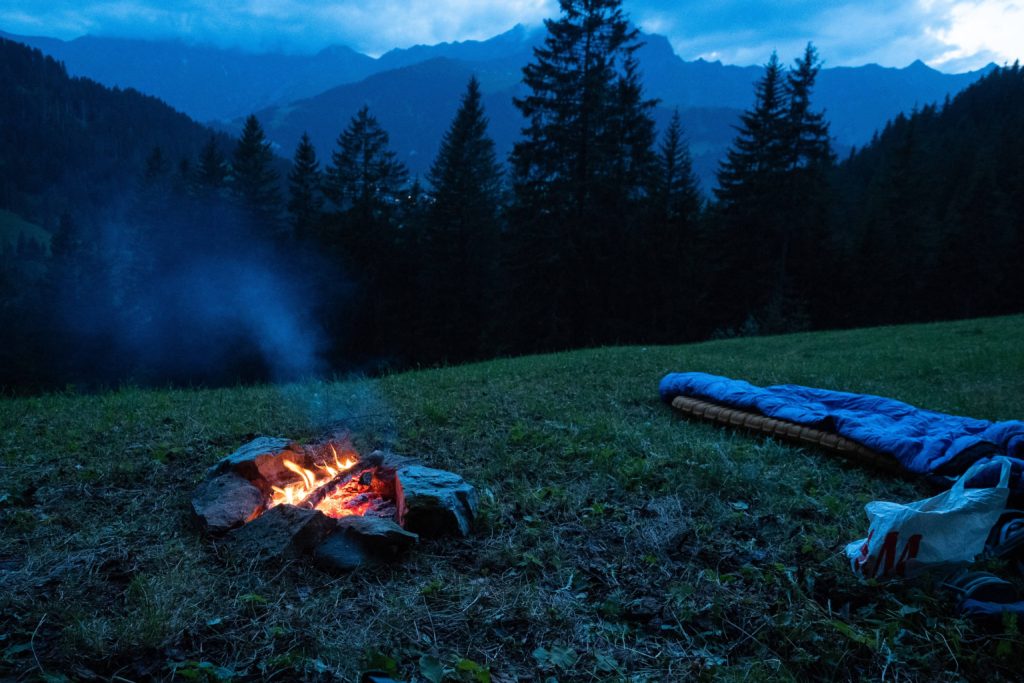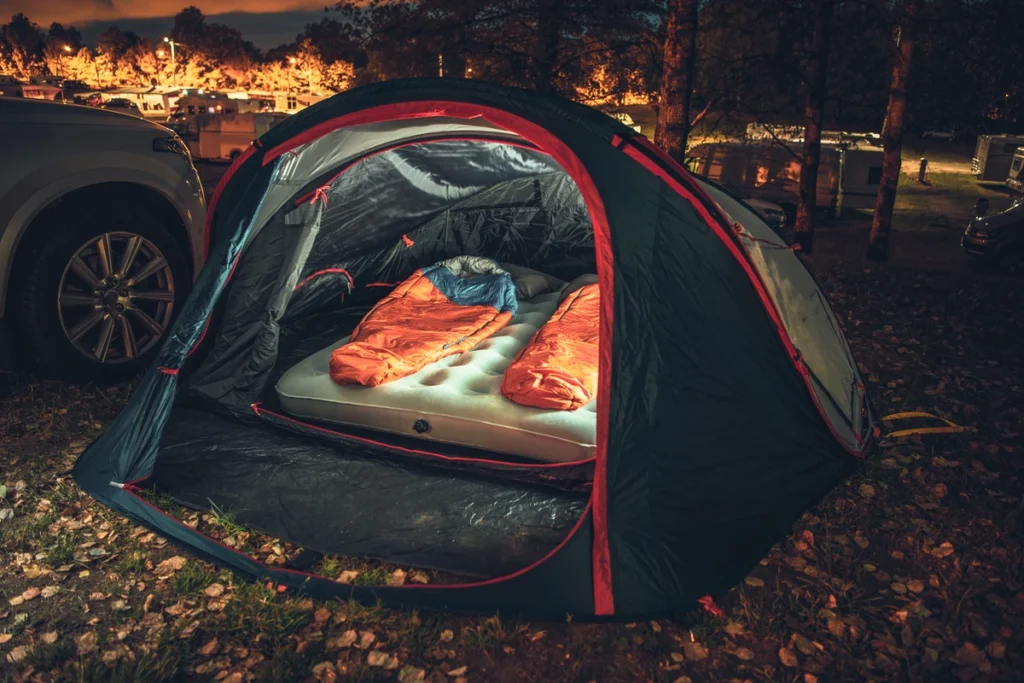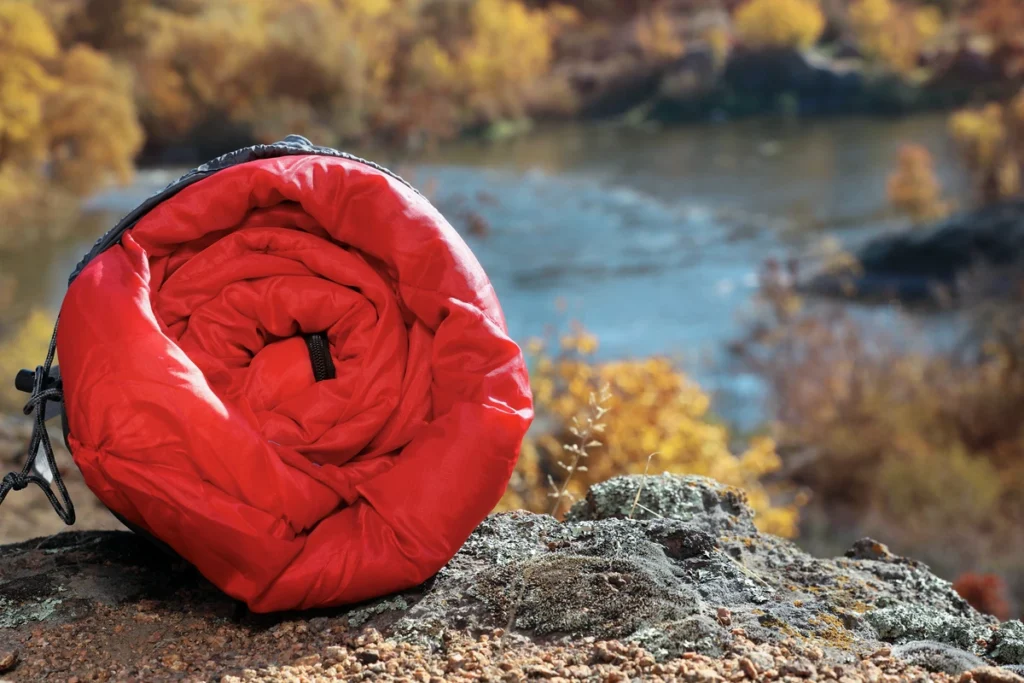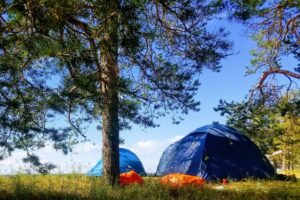The Ultimate Sleeping Bag Buying Guide: Everything You Need to Know
Last Updated: May 10, 2025
A chilly night under the stars shouldn’t turn into a miserable experience. Your sleeping bag makes all the difference between restful sleep and a night of tossing, turning, and shivering. Whether you’re car camping at nearby campgrounds or plotting your first backcountry trip to Zion National Park (my personal favorite), getting the right sleeping bag can make or break your experience.
Here’s what you absolutely need to know before buying your next sleeping bag.

Essential Sleeping Bag Buying Considerations
Temperature Ratings: Your First Critical Decision
Temperature ratings on sleeping bags tell you the coldest temp they’ll keep you comfortable. But here’s what most people don’t realize: these ratings are based on “average” sleepers in lab conditions, not real-world camping.
You’ve got three main categories:
- Summer bags (35°F and above)
- 3-season bags (10°F to 35°F)
- Winter bags (below 10°F)
Pro tip: Always choose a bag rated 5-10°F below the coldest temps you expect. You can always unzip for warmer nights, but adding insulation to a too-warm bag? Not happening.
Shape Makes a Difference
Sleeping bags come in three basic shapes, each with trade-offs:
Mummy Bags taper from shoulders to feet like a cocoon. They’re the warmest option because less air space means less heat loss. Perfect for cold weather camping and backpacking, but some folks feel claustrophobic.
Rectangular Bags give you tons of room to stretch out, roll over, and sleep naturally. They’re great for car camping and warm weather, but they’re heavier and don’t retain heat as well.
Semi-Rectangular (Barrel) Bags split the difference. You get more room than a mummy but better heat retention than a full rectangle. They’re the goldilocks option for many campers.
Insulation Options: Down vs. Synthetic
Your choice of insulation impacts weight, warmth, cost, and performance in wet conditions.
Down Sleeping Bags
Down feathers create tiny air pockets that trap heat incredibly well. Down bags offer the best warmth-to-weight ratio, compress smaller than synthetic bags, and last longer when properly cared for.
The catch? Down loses all insulation when wet and takes forever to dry. It’s also pricier than synthetic. Look for fill power ratings between 600-900 (higher numbers = warmer and lighter).
Synthetic Sleeping Bags
Synthetic insulation (usually polyester fibers) costs less and still insulates when wet. These bags dry faster, clean easier, and work great for wet environments or budget-conscious campers.
The downside: Synthetic bags are heavier, bulkier, and don’t last as long as down. They’re perfect for spring/summer camping or if you’re just starting out.
Size Matters More Than You Think
Getting the right fit isn’t just about comfort. A too-big bag creates extra air space your body needs to heat (making you cold). A too-small bag compresses insulation (also making you cold).
Most bags come in regular and long sizes. If you’re over 6 feet, go long. For side sleepers or those who move around, consider bags with extra width or a semi-rectangular shape.
Women’s sleeping bags aren’t just shorter—they’re designed for different body shapes and metabolisms, often with more insulation in key areas.
Key Features That Matter
Zippers
Left-zip vs. right-zip affects how you get in and out of your bag. Right-handed? Get a left-zip bag (zipper on your left side). Two-way zippers let you ventilate your feet while keeping your torso warm.
Full-length zippers work great for warm weather camping. Shorter zippers save weight and reduce heat loss for cold weather.
Hoods and Draft Collars
Hooded sleeping bags trap heat around your head (you lose significant heat through your noggin). Draft collars are insulated tubes around the neck opening that prevent warm air from escaping.
Both features are crucial for cold weather bags but unnecessary for summer camping.

Camping vs. Backpacking Sleeping Bags
Car Camping Bags
If you’re car camping, (see my popular guide on the Best Car Camping Locations in Utah) weight doesn’t matter. Go for comfort with spacious rectangular bags, rich features, and cozy fabrics. These bags prioritize space over packability.
Backpacking Sleeping Bags
Every ounce counts when you’re carrying your gear. Backpacking bags use lightweight materials, mummy shapes, and premium insulation. They cost more but pack smaller and weigh less.
How to Choose Your First Sleeping Bag
Start by asking yourself:
- Where will you camp most often? (Campgrounds vs. backcountry)
- What seasons? (Summer only vs. year-round)
- How cold does it get? (Check local weather averages)
- What’s your budget?
- How do you sleep? (Hot/cold sleeper, side/back/stomach)
For most beginners, a 3-season synthetic bag in a semi-rectangular shape hits the sweet spot. It handles most conditions you’ll encounter while leaving room to grow your camping skills.
Care Tips That Extend Bag Life
Treat your sleeping bag right, and it’ll keep you warm for years:
- Never store it compressed. Hang it loose or in a large storage sack
- Use a sleeping pad (insulation underneath is crucial)
- Consider a liner to keep your bag clean
- Wash sparingly with specialized cleaners
- Air dry thoroughly after each trip
Common Sleeping Bag FAQs

Start with spot cleaning first – most bags just need airing out after trips. For light use, wash once a season. For regular camping, wash 2-3 times a year or when it smells, feels oily, or looks dirty. Down bags need special down-specific cleaners and gentle cycles, while synthetic bags handle regular detergent better. Never use fabric softener on either type. Remember: washing too often breaks down insulation faster, but sleeping in a dirty bag isn’t great either.
Sometimes, but compatibility is key. Both bags need to be the same brand, model, and size, with one having a left-zip and the other a right-zip. Even then, some zippers won’t line up perfectly. Many brands make “his and hers” bags specifically designed to zip together. If you plan on doing this, mention it when shopping – some rectangular bags zip better than others. Mummy bags rarely zip together well due to their tapered shape.
It depends on your camping style. For ground camping, yes – sleeping pads provide crucial insulation from the cold ground and prevent your sleeping bag’s insulation from compressing beneath you. Even the warmest sleeping bag won’t keep you comfortable without one. However, if you’re camping in an RV, using a cot with thick padding, or sleeping on an insulated cabin floor, you might not need one. For car camping, you can get away with thicker foam pads or inflatable mattresses, while backpackers need lightweight, compact options.
Quality bags can last 10-20 years, but that’s the upper limit for well-maintained down bags used occasionally. Most campers see 5-10 years of good performance with regular use. Down lasts longer than synthetic when cared for perfectly, but synthetic bags still give you 3-7 solid years. Heavy use, improper storage, or wet conditions can shorten any bag’s lifespan significantly. Bottom line: replace your bag when it stops keeping you warm, not based on age alone.
Your Next Adventure Awaits
Choosing the right sleeping bag isn’t about getting the most expensive option. It’s about matching features to your needs. Whether you’re dreaming of alpine meadows or planning that weekend getaway, the perfect sleeping bag is waiting to keep you cozy under the stars.
Ready to find your ideal sleeping companion? Trust your needs over marketing hype, and you’ll be snoozing soundly in no time.
